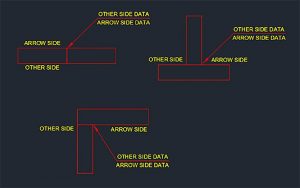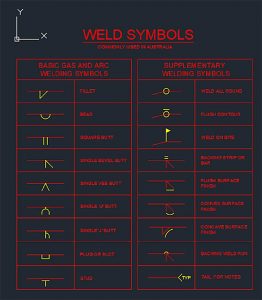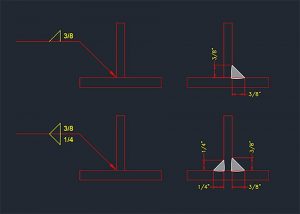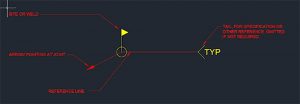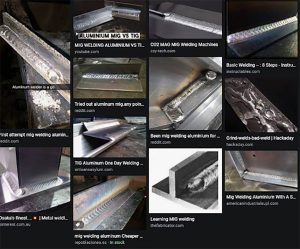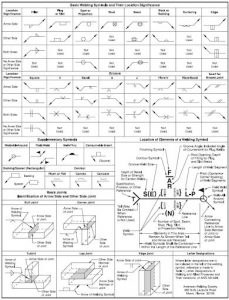Weld Symbol Cheat Sheet for Glazing Project Managers
Weld Symbols – Deciphered
As a PM in the glazing industry you don’t need to be a welding expert, however you will most likely run across the welding process when you have steel wind load or dead load clips on your projects. This means you may need to be able to decipher basic welding symbols that your engineer will use to specify how to attach clips to the building.
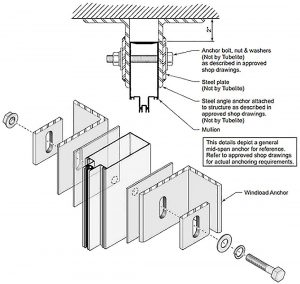
(click image to open in new tab)
Understanding the weld symbols that the engineer may use will help you when you are on the jobsite and inspecting the installed work. Knowing what the finished weld should look like will help alleviate issues that a 3rd party inspector may discover upon their walk through and give you peace of mind that things are installed as they should be.
In this article we are going to break down the basics of a weld symbol, and how to understand it as well as provide a resource to help you figure out anything you may not recognize.
Anatomy of a weld symbol:
The weld system starts with 3 main components. The arrow line, reference line, and tail. The following pictures show those 3 components in their standard configuration. The arrow will point at the weld itself on the drawing.
(click image to open in new tab)
The reference line will be the place the weld type and other information is placed. Many times different welds can take place on both sides of the parts being welded together. If this is the case then the information on the bottom side of the reference line always pertains to the side the arrow points to. The information above that line will be the other side of the components. The picture below shows some examples of this.
(click image to open in new tab)
The next component to understand on these symbols is the weld type itself. There are many different types of welds and they all have corresponding symbols that can be attached to the reference line. The chart below shows some of the most common types.
(click image to open in new tab)
Once the type of weld is identified, the size of the weld and number and length of the welds is required. The drawing here shows a ¼” fillet weld on a single side, 2” long and spaced every 4” along the length.
(click image to open in new tab)
Here are a couple other examples of weld sizes
(click image to open in new tab)
A couple other important items to know about your weld symbol is the “field weld symbol” which is a line and flag representing the weld that will take place onsite. The other important addition to the symbol is the “weld all around symbol” which indicates the weld will happen on all sides of the component being welded.
Furthermore, the tail of the welding symbol is a place for important information such as specification information, welding processes, or other important information. The OAW in the below example is calling out the oxyacetylene welding process to be used. AC calls out arc welding, and GMAW (MIG welding) is gas metal arc welding as some other examples.
(click image to open in new tab)
If you see symbols or notes you don’t understand then you will need to research these to find out why they are important and how to inspect them in the field. You may also want to talk to your onsite welders and make sure everyone is in agreement to what is required.
The internet has an enormous amount of information on welding and can be a great resource as well. This is especially true to see what each type of weld looks like in the field, and what failures look like. Spend some time looking around and getting familiar with the same type of welding required on your project.
(click image to open in new tab)
The chart shown here is an excellent cheat sheet of sorts from the American Welding Society and can be found at: https://app.aws.org/technical/errata/A2.4errata.pdf
The AWS or American Welding Society is a great resource for further information and resources should you find yourself needing to be more educated on this topic.


